Las Vegas is betting on sports. The Tropicana hotel, home of the showgirls, is a victim of the new era
The Tropicana has been synonymous with old-world Las Vegas glamour for nearly seven decades – but the legendary landmark has now closed its doors to make way for a $1.5 billion baseball stadium. As historians scramble to preserve the Tropicana’s colourful past, the site’s sporting future exemplifies the city’s ever-changing identity, writes Sheila Flynn
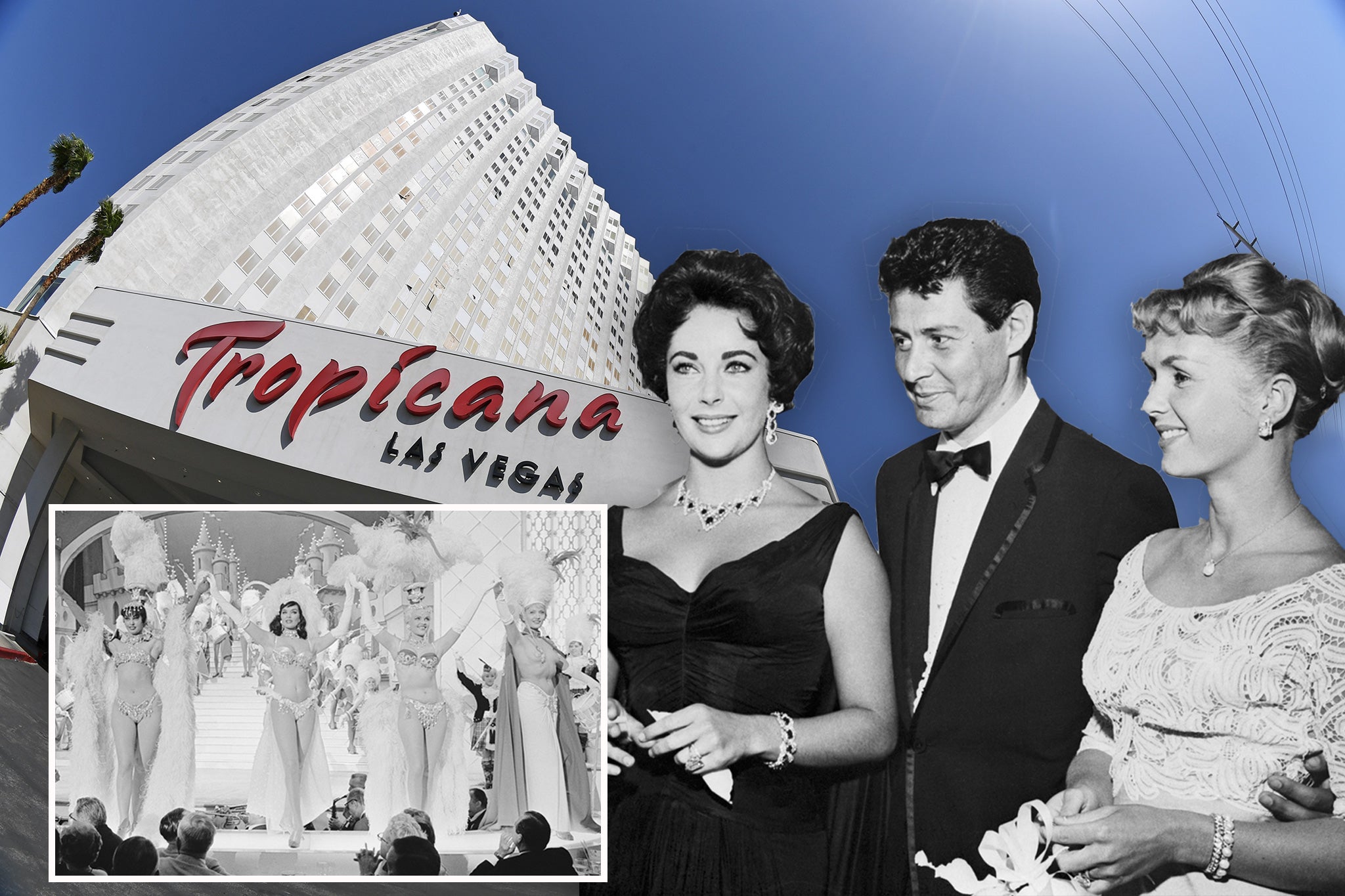
Your support helps us to tell the story
This election is still a dead heat, according to most polls. In a fight with such wafer-thin margins, we need reporters on the ground talking to the people Trump and Harris are courting. Your support allows us to keep sending journalists to the story.
The Independent is trusted by 27 million Americans from across the entire political spectrum every month. Unlike many other quality news outlets, we choose not to lock you out of our reporting and analysis with paywalls. But quality journalism must still be paid for.
Help us keep bring these critical stories to light. Your support makes all the difference.
The showgirls burst onto the stage on Christmas Eve in rhinestone-laden, feathered topless glory, the 1959 debut of Paris-tinged Folies Bergere launching the Tropicana into a new level of Las Vegas legend – and forever intertwining the identity of Sin City with the image of showgirls themselves.
It was an over-the-top production that cemented the Tropicana Las Vegas as a mainstay on the Strip and an integral part of the city’s mystique. Folies Bergere would go on to entertain audiences for 50 years, to this day retaining the title of longest-running show in Vegas history.
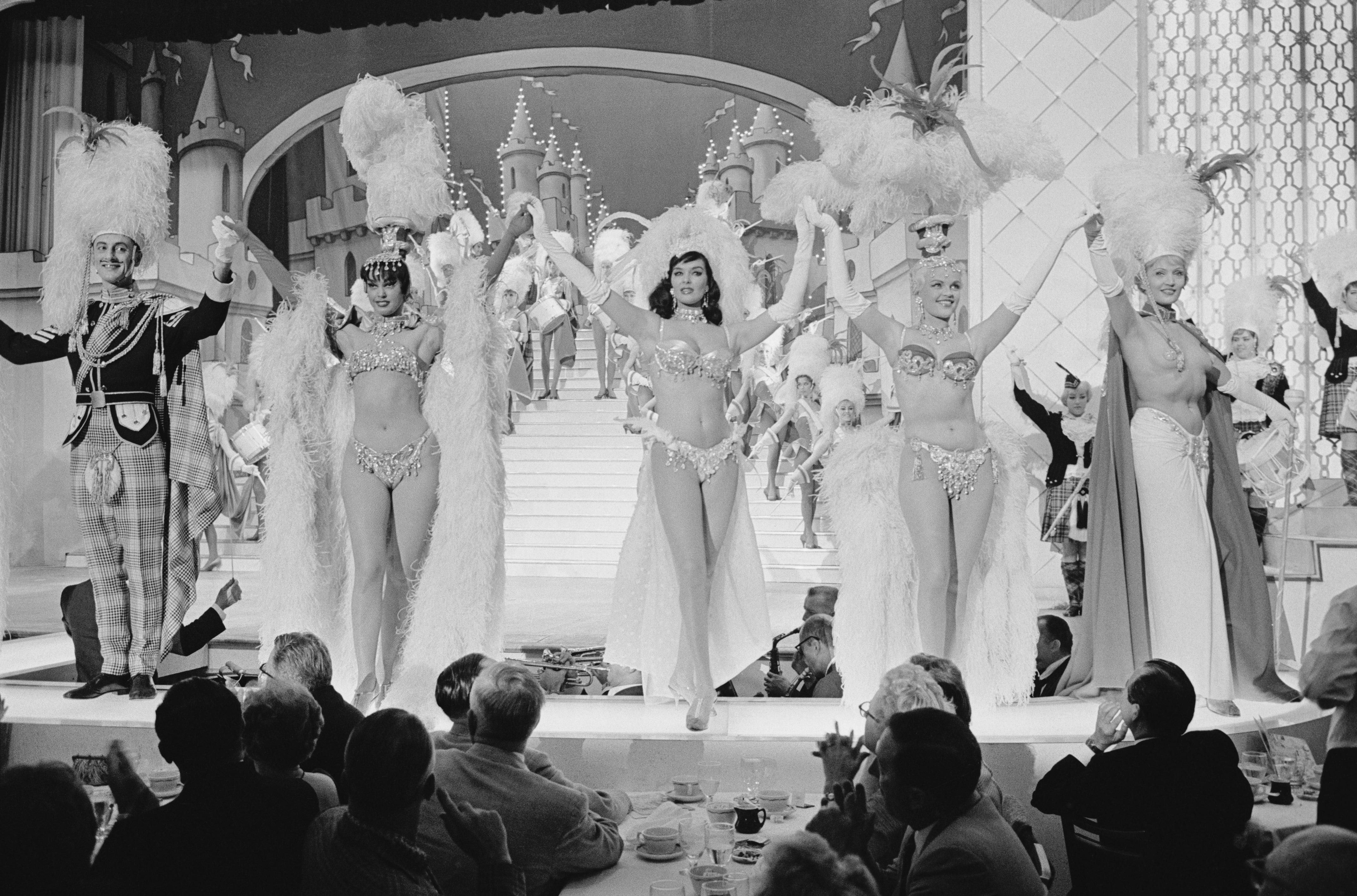
But the Trop, as it’s known in the city’s shorthand, had already been building a glamorous reputation in the short years since its 1957 opening; it had quickly become a draw for the famous, rich and beautiful in the burgeoning desert playground in the post-Second World War years.
Stars like Frank Sinatra graced its stage, and the Tropicana would go on to be name-dropped in the 1971 film Diamonds Are Forever, in which none other than James Bond stayed in one of its swanky suites. Liz Taylor, Debbie Reynolds and Eddie Fisher hobnobbed together at the hotel’s opening – which featured a performance by Fisher two years before the trio’s love triangle sent the world’s gossip pages into overdrive.
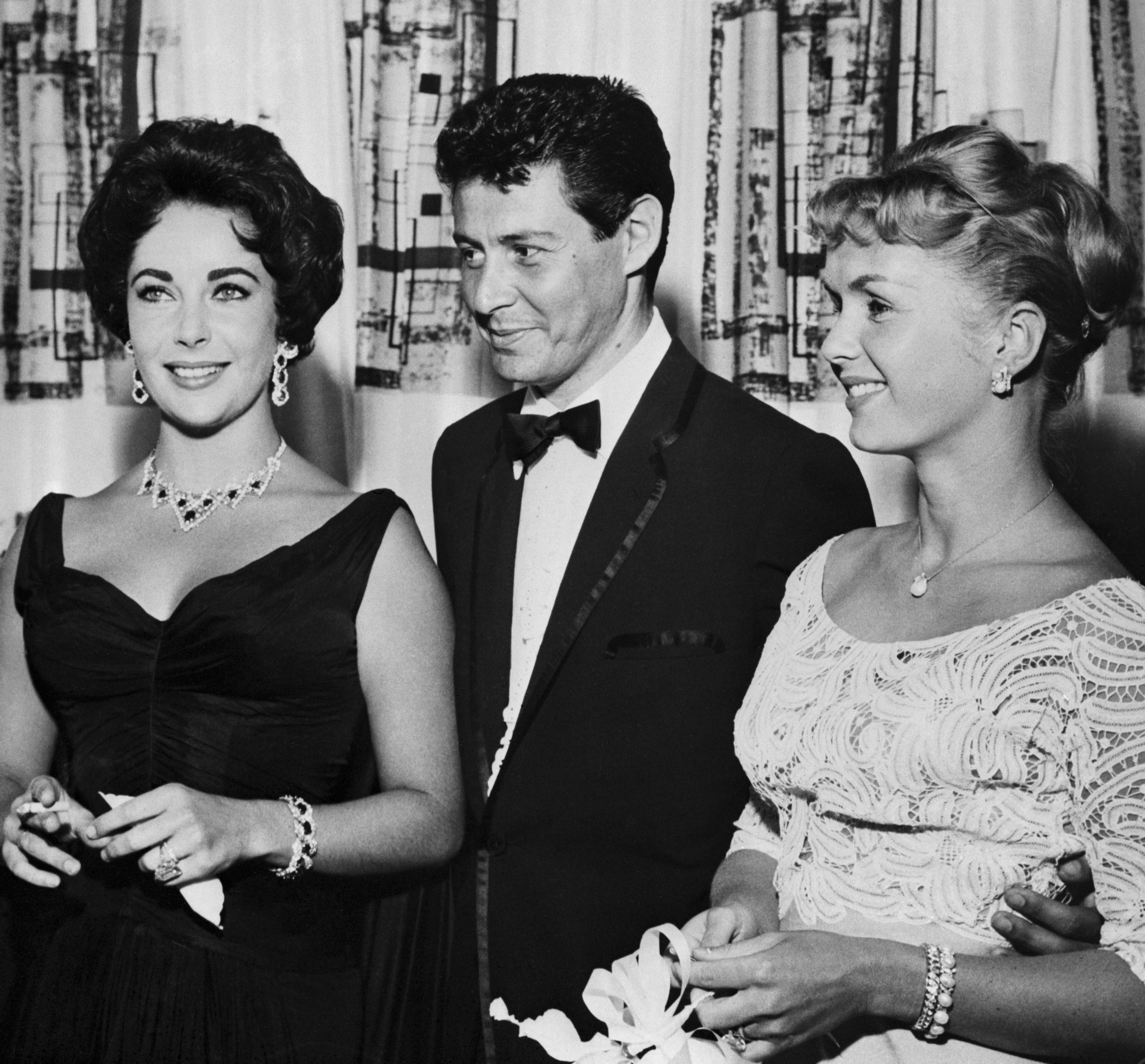
In April 1959, about nine months before showgirls put the Trop on a new map, Taylor and Fisher were pictured chatting to Sammy Davis Jr in a pre-dawn tete-a-tete at the hotel – discussing how their wedding plans would be affected by whether Reynolds would agree to a quickie Nevada divorce from Fisher. Reynolds soon acquiesced – and the couple tied the knot on May 12,1959, the same day Fisher serenaded Taylor with love songs from the stage at the Tropicana during his closing performance at the venue.
Now the Tropicana itself has closed the curtain on its own 67-year run; last week the hotel shut down for good to pave the way for Vegas’ planned $1.5billion Major League Baseball stadium. The Oakland Athletics, like the California city’s NFL team before them, will be relocating to Las Vegas, and part of that means that the famed Tropicana will be replaced by a structure that has been likened to a “spherical armadillo”.
“I felt sad, because there’s a lot of history to it, and I felt a sense of understanding – because this is what we do,” Michael Green, a history professor at University of Nevada Las Vegas, tells The Independent. “We are pretty good at preserving local history; we just don’t necessarily preserve the hotels, or at least the Strip hotel/casinos.”
The son of a blackjack dealer, Green grew up in Vegas – and admits, “for the most part, the Tropicana was looking a little bit old and a little bit tired, I think. And I hate to see it, because part of the original building is still there … but if you look at what the other hotel/casinos are offering up and down the Strip, the Tropicana really was not positioned to compete unless they did a massive rebuilding project or went back to square one.”
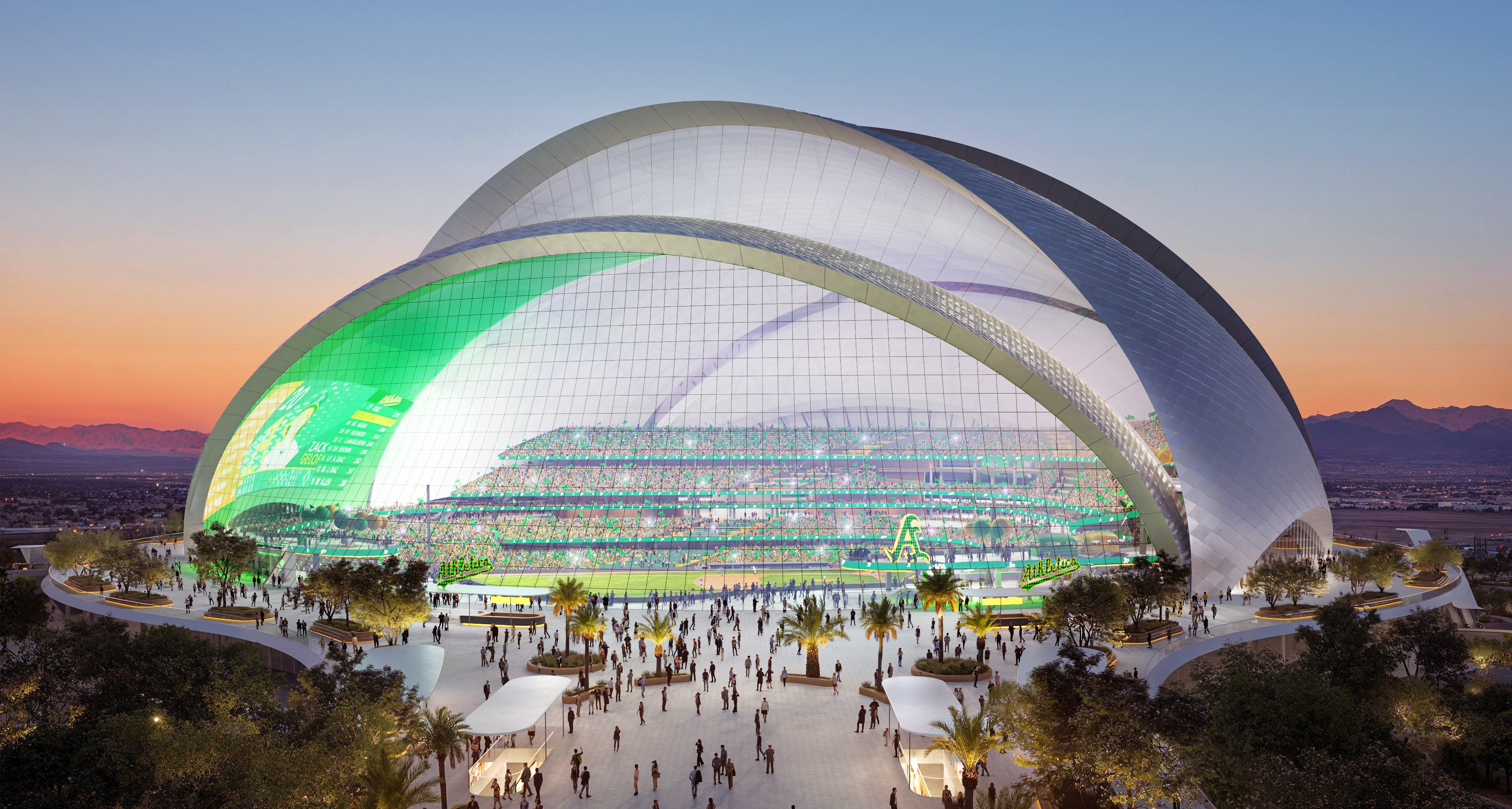
The owners of the Tropicana, Bally’s Corporation, had clearly agreed; chairman Soo Kim told The New York Times last year that the “Trop” was “obviously iconic, but … economically obsolete.”
He said the 35-acre site was worth more than the economic capacity of the casino and called the deal parcelling nine acres to the Athletics a “no-brainer.”
Bally’s acquired the building and operations of the Tropicana in 2022 from Gaming & Leisure Properties, Inc. (GLPI) as part of a $148 million transaction, entering into a 50-year ground lease with GLPI, with the ability to extend to 99 years upon achieving key investment milestones. The companies jointly announced just under a year ago that they had reached a binding agreement with the Athletics, with GLPI agreeing “to fund up to $175 million towards certain shared improvements within the future development in exchange for a commensurate rent increase,” according to a May 2023 press release.
“The Oakland Athletics’ interest in developing a world-class Major League Baseball stadium on our site underscores its status as one of the most prime locations on the Las Vegas Strip and will enhance any future development of our remaining 26 acres,” GLPI chairman and CEO Peter Carlino said at the time. “As the project moves forward, we also expect that GLPI will have opportunities to further invest in the various aspects of the overall project to the extent we deem that doing so will generate an attractive risk adjusted return on our shareholders’ capital.”
Some nostalgic visitors rushed to book in to the Tropicana before last week’s closure, though reviews in the run-up to the shutdown were littered with complaints of “dilapidated” conditions or lacking service. A few particularly sentimental customers arranged stays to coincide with the final checkout, however – tourists like Joe Zappulla of New Jersey, who cried as he spoke to AP on the day Tropicana closed its doors.
“Old Vegas, it’s going,” he said. “So I’m really clinging to a little piece of that.”

The Tropicana is not the first historic Vegas property to vanish, though it’s among the last remaining from an early era – and the replacement of a showgirls birthplace with a sports stadium is significant amidst the ongoing diversification and evolution of Sin City.
“There was a time, not very long ago, maybe ten years ago, when the professional sports leagues wanted nothing to do with Las Vegas,” Geoff Schumacher, author of Sun, Sin & Suburbia: The History of Modern Las Vegas, tells The Independent. “They were worried about gambling, and they did not want to be associated with the city in any way.
“And once these sports leagues discovered that gambling was something that was going to expand to other states, sports betting was going to expand to other states – and it was going to become more and more accepted in that way – they recognized Las Vegas could be a great place to have a team.”
The cultural shift around gambling has undeniably impacted Vegas mechanics.

“At the time the Mirage opened in ‘89, essentially the revenue stream, gambling to everything else, was two to one; it is now reversed,” UNLV’s Green tells The Independent. “From 1931 to 78, Nevada had a monopoly on legal casino gambling; this was the only state. Now some sort of gambling exists in almost every state …gambling remains an attraction, but it is not the only. Sports fits into this.”
The Raiders moved from Oakland to Vegas in 2020, bringing droves of opposing team supporters in regularly from cities around the country – a shrewd and consistent financial boon.
“Suddenly we had hockey, football, and we have women’s basketball – and now we’re adding baseball,” says Schumacher. “And we’re likely to add an NBA team, as well … That would have been hard to predict ten years ago.”
On top of that, Vegas’ sports shift has broadened even further; in November, the streets and Strip of Sin City shut down for the inaugural Formula One race after three years and $500m in planning.
Las Vegas, says Green, “will always be, if not in a state of flux, a state of competing in the game: Can you top this?”
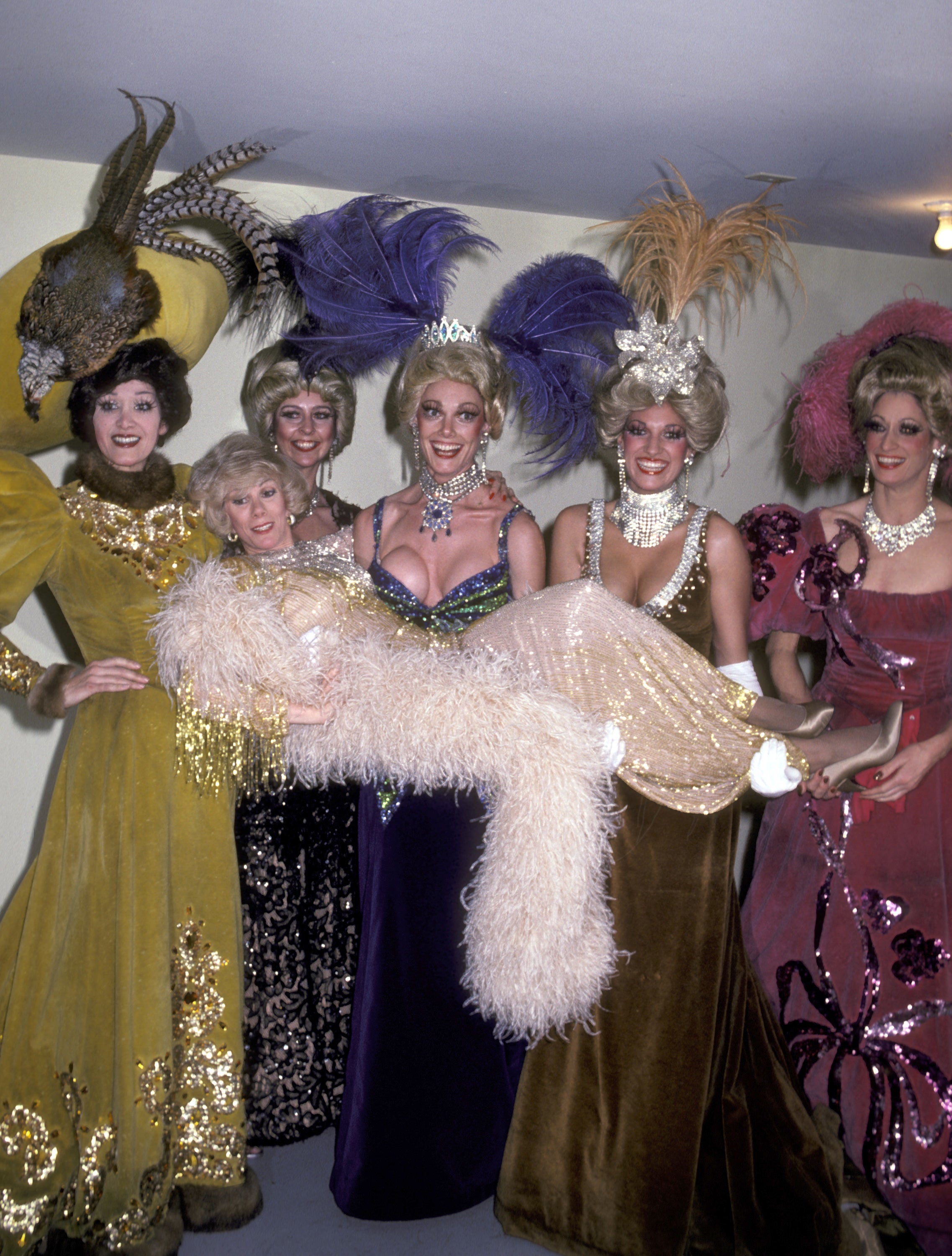
“It’s definitely the culture of reinvention,” he says. “And historians here, those of us who’ve been around long enough, have already said goodbye to so many legendary and not-so-legendary properties along the Strip that we kind of shrug our shoulders.
“But we also say, ‘All right, as long as you’re preserving, say, the sign for the Neon Museum and the artefacts and papers … realism does set in, even among historians.”
There is certainly a wealth of history to preserve at the Tropicana, which shut its doors last week amidst tears and fanfare just days short of its 67th anniversary. Like Las Vegas itself, the famed hotel’s run incorporated scandals and intrigue that touched myriad spheres of society – from the stage to the mob.
“No offense to other cities, but sometimes a city can be around for 300 years, and it’s not really that interesting,” says Schumacher, who wears another hat as a vice president at Vegas’ Mob Museum.
”But in Las Vegas, these amazing turns of events that occurred here – with our impact … on World War II and atomic testing, and obviously tourism and entertainment – all the things that happen in Vegas are so much bigger than life, right?”
And many of those things happened at the Tropicana, including mafia schemes and chicanery.
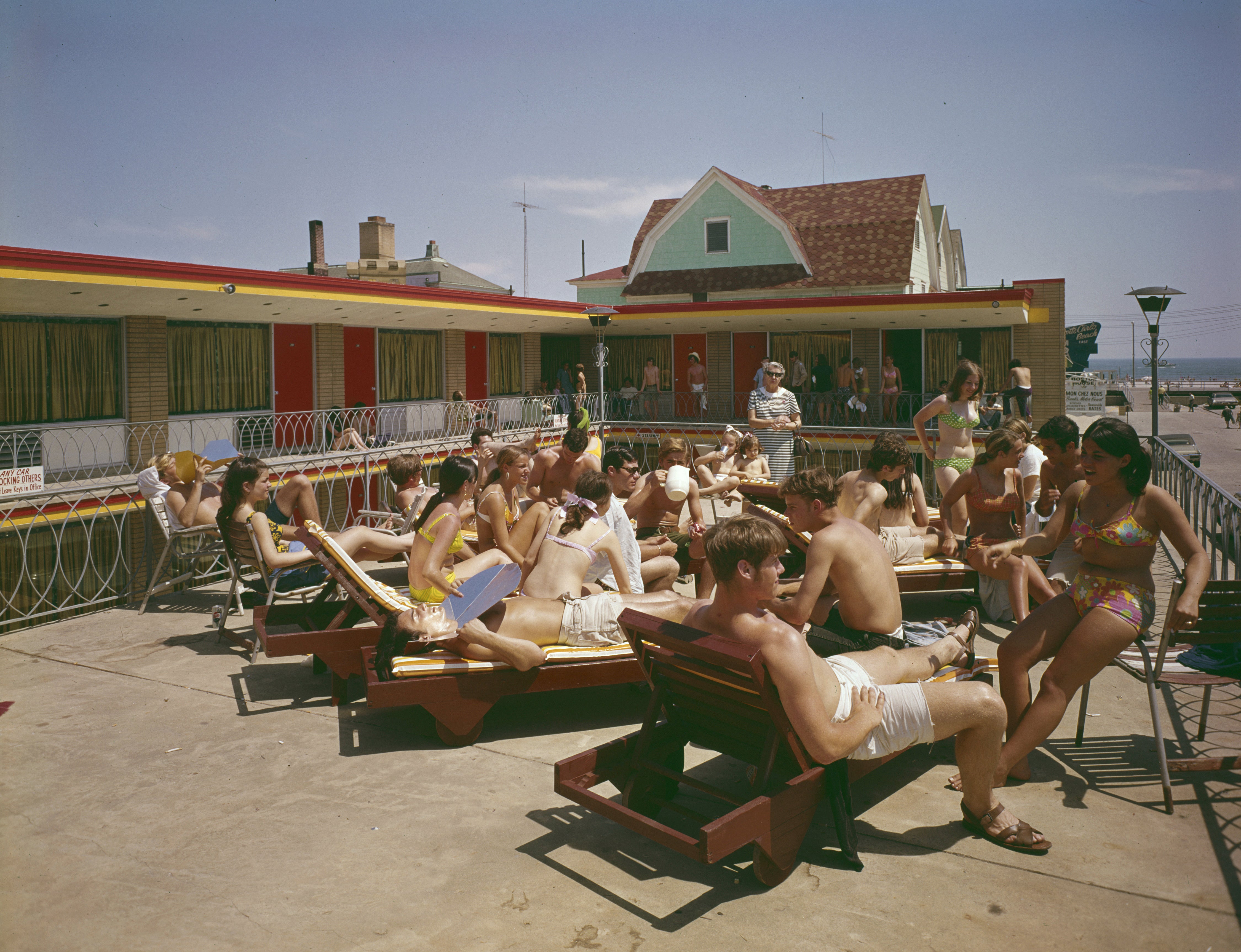
“You almost as easily could have done the movie Casino about the Tropicana scam,” says Schumacher, detailing famed mob skimming at the hotel and even a wild story about a made man’s unlikely front.
“Joe Agosto was employed at the Tropicana in the 1970s as the executive producer of Folies Bergere; his real role was to oversee the skim of casino profits and the delivery of those skimmed profits to the Kansas City mob – and he kind of snowed the owners of the Tropicana into believing he was a good guy who couldn’t possibly be involved in such a thing,” Schumacher says.
“He didn’t know anything about entertainment or stage productions, but he was the executive producer of Folies Bergere – such a bizarre, bizarre thing for him to do, but it worked for him as a front,” he says … at least until a series of FBI bugs uncovered the scheme.
Perhaps the most famous Tropicana mafia story, however, involves the failed assassination attempt on mobster Frank Costello – who, upon being shot in the head weeks after the hotel opening, was found by police to have a piece of paper in his pocket outlining the Tropicana’s earnings and “money to be skimmed.”

“It’s so funny, because the mob doesn’t generally keep notes,” Schumacher laughs. “It doesn’t keep ledgers or have this kind of thing because they don’t want to get caught with them.
“And here we are: Frank Costello is a victim of an attempted assassination, and he ends up being victimised, if you will, in his own criminal pursuits because these numbers are in his coat pocket.”
The Mob Museum, he says, has “been in touch with the Tropicana, and they are actively seeking to identify objects that we might want to bring into our collections.” The hotel announced on its social media that it was also working towards preservation with the Neon Museum, UNLV and the Las Vegas Showgirl Museum, where founder and owner Grant Philipo is particularly excited to welcome pieces of Tropicana history.
“One of the most impressive places, when I came here in ‘76, was the Tropicana, because they had that enormous pineapple-looking fountain that was out in front of it – and I’d never seen anything like that in my entire life,” the native Iowan and former Vegas showboy tells The Independent.
“Unfortunately, in Vegas, I think there’s only four original properties left, and it has never mattered to a lot of the people,” he says – sounding personally bereft to see another old stalwart close. He recalls staging the “second-largest and the second-to-the-last show at The Dunes” before its closure in 1993.
“It was heartbreaking to remember all the shows that I had seen there and all the experiences that I had there – and to know that they were just going to blow it up and start new.”
In the case of the Tropicana, demolition is slated for October, and Philipo is determined to preserve some of its most distinguishing elements – including two ceiling carousels that featured in the old showroom.
“They promised to give us any and everything related to entertainment from the property, and hopefully we’ll be able to get the carousels out of the ceiling,” says Philipo, adding that he recently toured the site. “We were promised the draperies that are in the main showroom, the current main showroom.
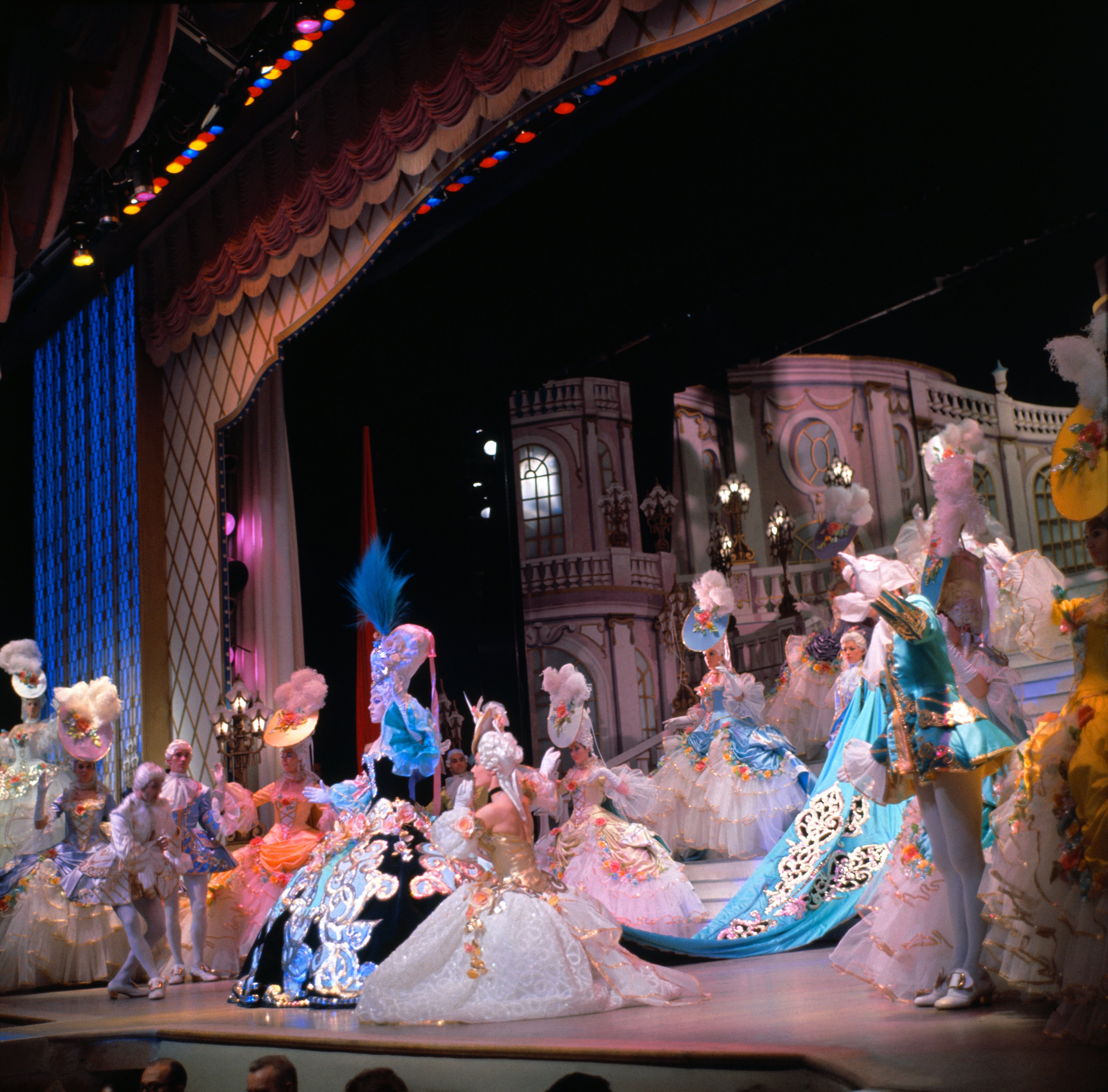
“There were some fabulous statues that were around the outside wall of that showroom … they’ve been covered up with plasterboard for years; we don’t know if they’re still there or not. But once it gets to where they’re actually doing some demo on the building, then we’ll be able to find out if those things are there, as well.”
More facets of Tropicana’s history are scheduled to find a new home at UNLV, where the University Libraries Special Collections and Archives considers it something of a mission to chronicle the ever-changing landscape of a fast-paced city.
“It was in business for almost 70 years, which is so long in Las Vegas history,” director Sarah Quigley tells The Independent, noting how the Tropicana “saw so much change in the city.
“And so we want to document how they contributed to that change, how they responded to that change, in whatever way we can.”
UNLV has reached a “tentative agreement that we will be the repository for their corporate records,” she says.
That includes “promotions and marketing materials, entertainment files that maybe document the performers who worked there over the years, business records that document multiple ownership transitions, photograph policies, procedure documents, whatever they’re comfortable with us having that give us the fullest picture of the history of that hotel.”
The teams at UNLV, she says, “do feel a responsibility to document the history of Las Vegas I think, in particular, because the city is so future-oriented and often not as focused on the past as on where we’re headed.”
It’s a reality that divides locals as well as nostalgic visitors.
“We’re always going to have that split here in Vegas between the people who liked Las Vegas back in the day more than they like it now – because they liked it smaller, they liked it more intimate,” Schumacher tells The Independent. “They liked that sort of Rat Pack vibe that we had that Las Vegas really lived on for many, many years.
“And then there’s the other side of people who live in the now, in the future, and see Las Vegas emerging as a major American city – and they want all the amenities that come with that. And a Major League Baseball stadium is going to trump an old hotel every time, in their mind.”
The Tropicana, however, will undeniably live on, immortalized not only in a namesake avenue intersecting the Strip but also in countless pop culture vignettes through the years. Parts of it will stand proudly in Vegas museums. Snapshots will endure in the memories and photo albums of visitors and locals alike. Future plans for the site could incorporate Tropicana tributes or historical nods; no detailed public plans have been revealed, so it remains to be seen.
And there will always be the Las Vegas imagery of feathered, topless showgirls – and the Trop’s part to play in Vegas legacy and lore.
Subscribe to Independent Premium to bookmark this article
Want to bookmark your favourite articles and stories to read or reference later? Start your Independent Premium subscription today.
Join our commenting forum
Join thought-provoking conversations, follow other Independent readers and see their replies
Comments